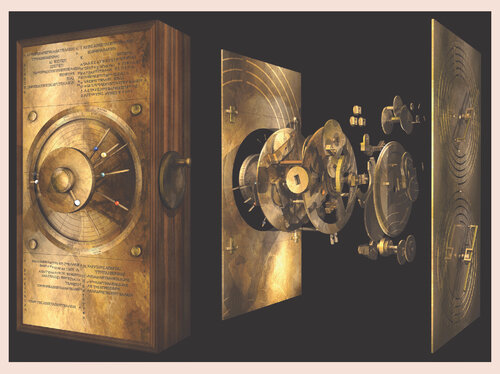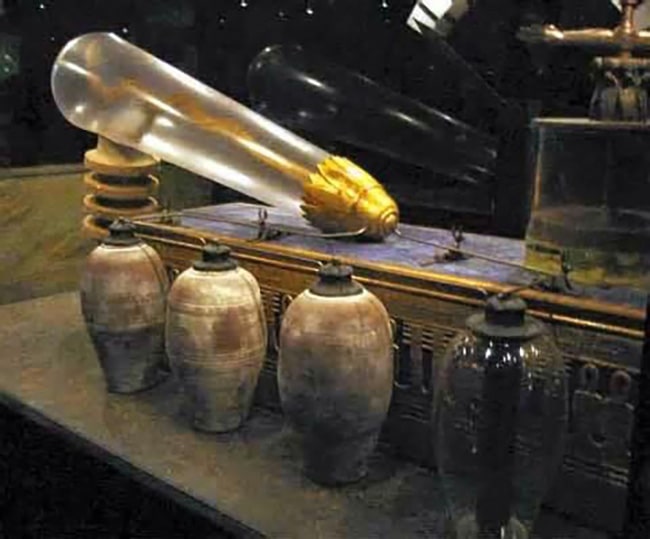Scientists have a new understanding of the mysterious Antikythera mechanism that challenges assumptions about ancient technology.
The Antikythera mechanism was discovered in 1901 in the remains of a shipwreck off the coast of the Greek island Antikythera. As with many ancient wonders, the Antikythera mechanism raises more questions than answers. Researchers continue to delve into its mysteries, hoping to uncover all its secrets.
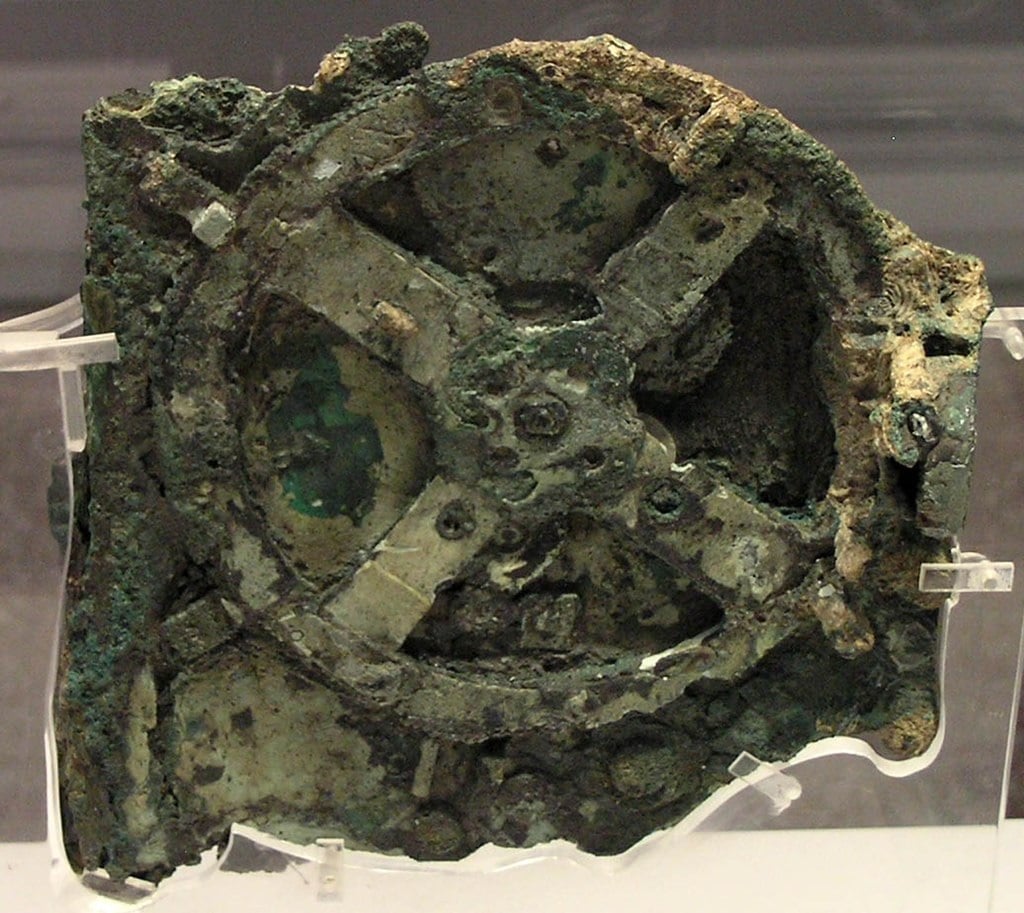
Similarly, another enigma that has baffled historians for decades is The Amber Room’s Secrets. This exquisite chamber, made entirely of amber panels, gold leaf, and mirrors, vanished during World War II, leaving behind a trail of intrigue and speculation. The mechanism is currently on display at the National Archaeological Museum in Athens, Greece, where it continues to captivate visitors from around the world.
Discovery of the Antikythera Mechanism
In 1900, diver Elias Stadiatis, clad in a copper and brass helmet and a heavy canvas suit, emerged from the sea shaking in fear and mumbling about a “heap of dead naked people.” He was among a group of Greek divers from the eastern Mediterranean island of Symi who were searching for natural sponges. They had sheltered from a violent storm near the tiny island of Antikythera, between Crete and mainland Greece.
When the storm subsided, they dived for sponges and chanced on a shipwreck full of Greek treasures—the most significant wreck from the ancient world to have been found up to that point. The “dead naked people” were marble sculptures scattered on the seafloor, along with many other artifacts. Soon after, their discovery prompted the first major underwater archaeological dig in history.
One object recovered from the site, a lump the size of a large dictionary, initially escaped notice amid more exciting finds. Months later, however, at the National Archaeological Museum in Athens, the lump broke apart, revealing bronze precision gearwheels the size of coins. According to historical knowledge at the time, gears like these should not have appeared in ancient Greece, or anywhere else in the world, until many centuries after the shipwreck. The find generated huge controversy.
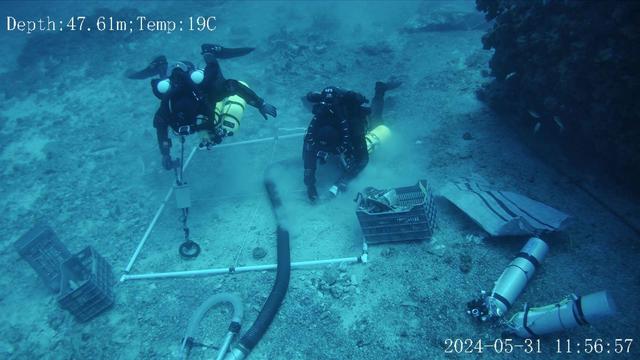
The lump is known as the Antikythera mechanism, an extraordinary object that has befuddled historians and scientists for more than 120 years. Over the decades, the original mass split into 82 fragments, leaving a fiendishly difficult jigsaw puzzle for researchers to put back together. The device appears to be a geared astronomical calculation machine of immense complexity. Today we have a reasonable grasp of some of its workings, but there are still unsolved mysteries. We know it is at least as old as the shipwreck it was found in, which has been dated to between 60 and 70 B.C.E., but other evidence suggests it may have been made around 200 B.C.E.
Understanding the Antikythera Mechanism
In March 2021, my group at University College London, known as the UCL Antikythera Research Team, published a new analysis of the machine. The team on that research included me (a mathematician and filmmaker); Adam Wojcik (a materials scientist); Lindsay MacDonald (an imaging scientist); the late Myrto Georgakopoulou (an archaeometallurgist); and two graduate students, David Higgon (a horologist) and Aris Dacanalis (a physicist). Our paper posited a new explanation for the gearing on the front of the mechanism, where the evidence had previously been unresolved. Our findings gave us an even better appreciation for the sophistication of the device—an understanding that challenges many of our preconceptions about the technological capabilities of the ancient Greeks.

Ancient Astronomy and Technological Marvel
We know the Greeks of that era were accomplished naked-eye astronomers. They viewed the night sky from a geocentric perspective—every night, as Earth turned on its axis, they saw the dome of stars rotating. The stars’ relative positions remained unchanged, so the Greeks called them the “fixed stars.” These early astronomers also saw bodies moving against the background of stars: the moon goes through a rotation against the stars every 27.3 days; the sun takes a year.
The other moving bodies are the planets, named “wanderers” by the Greeks because of their erratic motions. They were the deepest problem for astronomy at the time. Scientists wondered what they were and noticed that sometimes the wanderers move in the same direction as the sun—in “prograde” motion—then come to a stop and reverse direction to move in “retrograde.” After a while, they reach another stationary point and resume prograde motion again. These rotations are called the synodic cycles of the planets—their cycles relative to the sun. The seemingly strange reversals happen because, as we know now, the planets orbit the sun—not, as the ancient Greeks believed, Earth.
In modern terms, all the moving astronomical bodies have orbits close to the plane of Earth’s motion around the sun—the so-called ecliptic—meaning that they all follow much the same path through the stars. Predicting the positions of the planets along the ecliptic was very difficult for early astronomers. This task, it turns out, was one of the primary functions of the Antikythera mechanism. Another function was to track the positions of the sun and moon, which also have variable motions against the stars.
Much of the mechanism’s design relies on wisdom from earlier Middle Eastern scientists. Astronomy in particular went through a transformation during the first millennium B.C.E. in Babylon and Uruk (both in modern-day Iraq). The Babylonians recorded the daily positions of the astronomical bodies on clay tablets, which revealed that the sun, moon, and planets moved in repeating cycles—a fact that was critical for making predictions. The moon, for instance, goes through 254 cycles against the backdrop of the stars every 19 years—an example of a so-called period relation. The Antikythera mechanism’s design uses several of the Babylonian period relations.
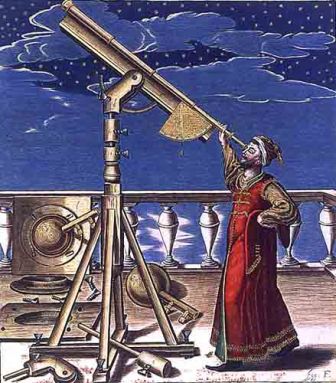
The Front of the Antikythera Mechanism
The most prominent feature of the front of the largest fragment is the main drive wheel, which was designed to rotate once a year. It is not a flat disk like most of the other gears; this one has four spokes and is covered in puzzling features. The spokes show evidence that they held bearings: there are circular holes in them for turning axles. The outer edge of the gear contains a ring of pillars—little fingers that stick up perpendicularly, with shoulders and pierced ends that were clearly intended to carry plates. Four short pillars held a rectangular plate, and four long pillars held a circular plate.
Following Price, Wright proposed that an extensive epicyclic system—the two-circles idea the Greeks used to explain the odd reversing motions of the planets—had been mounted on the main drive wheel. Wright even constructed an actual model gearing system in brass to show how it worked. In 2002 he published a groundbreaking planetarium model for the Antikythera mechanism that displayed all five planets known in the ancient world. (The discovery of Uranus and Neptune in the 18th and 19th centuries, respectively, required the advent of telescopes.) Wright showed that the epicyclic theories could be translated into epicyclic gear trains with pin-and-slot mechanisms to display the planets’ variable motions.
When I first saw Wright’s model, I was shocked by its mechanical complexity. It even featured eight coaxial outputs—tubes all centered on a single axis—that brought information to the front display of the device. Was it really plausible that the ancient Greeks could build such an advanced system? I now believe that Wright’s conception of coaxial outputs must be correct, but his gearing system does not match the economy and ingenuity of the known gear trains. The challenge our UCL team faced was to reconcile Wright’s coaxial outputs with what we knew about the rest of the device.
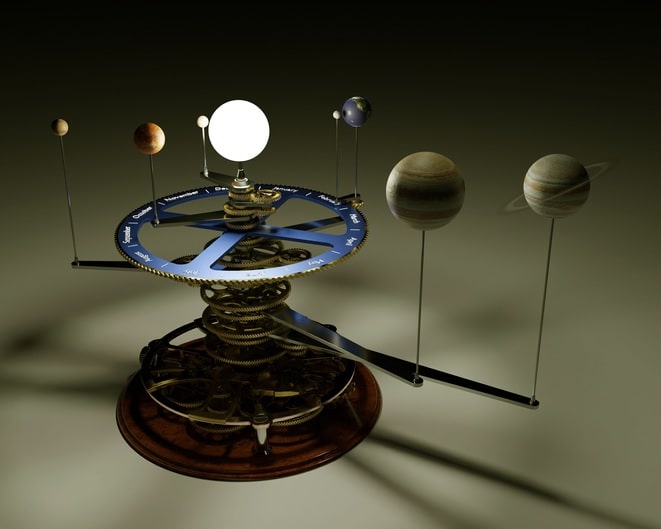
Technological Innovations and the Antikythera Mechanism
In trying to decipher the front of the device, it was imperative to identify the planetary cycles built into the mechanism because they define how the gear trains calculated planetary positions. Earlier research assumed that they would be based on the planetary period relations derived by the Babylonians. But in 2016, Jones made a discovery that forced us to discard that assumption.
The x-ray CT of the front-cover inscription shows it is divided into sections for each of the five planets. In the Venus section, Jones found the number 462; in the Saturn section, he found the number 442. These numbers were astonishing. They did not match the Babylonian period relations, indicating that the Greeks had developed their own astronomical cycles for the Antikythera mechanism. These discoveries continue to challenge our understanding of the technological capabilities of the ancient Greeks and their ability to create such a sophisticated device.
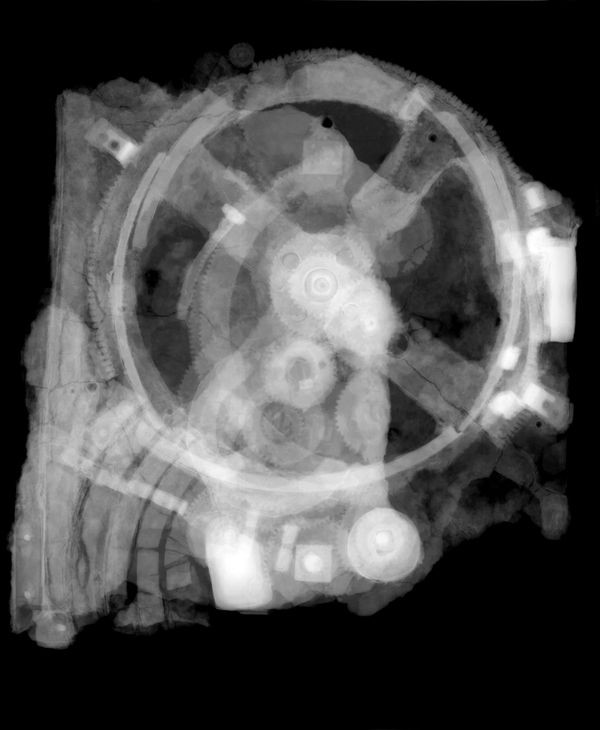
The Antikythera mechanism, with its precision gears bearing teeth about a millimeter long, is completely unlike anything else from the ancient world. It seems that the device could be used to predict the positions of the sun, moon, and planets on any specific day in the past or future. The maker of the machine would have had to calibrate it with the known positions of these bodies. A user could then simply turn a crank to the desired time frame to see astronomical predictions.
The mechanism displayed positions, for instance, on a “zodiac dial” on the front of the mechanism, where the ecliptic was divided into a dozen 30-degree sections representing the constellations of the zodiac. Based on the x-ray data, Price developed a complete model of all the gearing on the device.
Key Researchers and Their Contributions
One of the central researchers in the early years of Antikythera research was German philologist Albert Rehm, the first person to understand the mechanism as a calculating machine. Between 1905 and 1906, he made crucial discoveries that he recorded in his unpublished research notes. He found, for instance, the number 19 inscribed on one of the surviving Antikythera fragments.
This figure was a reference to the 19-year period relation of the moon known as the Metonic cycle, named after Greek astronomer Meton but discovered much earlier by the Babylonians. On the same fragment, Rehm found the numbers 76, a Greek refinement of the 19-year cycle, and 223, for the number of lunar months in a Babylonian eclipse-prediction cycle called the saros cycle. These repeating astronomical cycles were the driving force behind Babylonian predictive astronomy.
The second key figure in the history of Antikythera research was British physicist turned historian of science Derek de Solla Price. Starting in the 1950s, Price spent decades building on the work of Rehm and others. Based on x-ray analysis of the fragments and an understanding of ancient Greek mathematical astronomy, Price developed the first detailed theoretical reconstruction of the Antikythera mechanism.
His work has been criticized and revised but was also a foundation for modern Antikythera research. His 1959 article “An Ancient Greek Computer” in Scientific American was the first major popular account of the mechanism. In 1974 Price published a long paper titled “Gears from the Greeks” that established his reputation as the greatest Antikythera researcher of the 20th century.
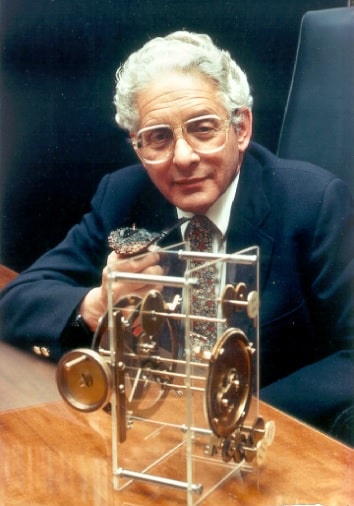
In 2005 Greek scientist Christos Karakalos led a study of the mechanism that involved a new set of x-rays. Karakalos and his team worked with HP and X-Tek Systems (now Nikon Metrology) to obtain surface images and x-ray CT data of the device that were far better than those Price had available. They took the device to an X-Tek microfocus CT machine in Athens for a month of CT scanning, working around the clock.
This work led to many key discoveries, including the realization that there were 10 planets on the zodiac dial. They found the names of the planets inscribed on the fragment, including Hermes (Mercury) and Aphrodite (Venus). Karakalos’s team also discovered the names of months on the mechanism’s calendar dial. These insights have provided a wealth of information for researchers to better understand the device.
In 2016 Jones’s team at New York University used new imaging techniques to uncover more details of the inscriptions. Their work has provided further insight into the functions of the Antikythera mechanism and its sophisticated design. The ongoing research continues to shed light on this ancient marvel, revealing the advanced technological capabilities of the Greeks and challenging our understanding of their scientific achievements.
Frequently Asked Questions (FAQs)
1. Who invented the Antikythera mechanism?
The exact inventor of the Antikythera mechanism is unknown, but it is believed to have been created by Greek scientists around the first century BCE.
2. How did the Antikythera mechanism work?
The Antikythera mechanism worked by using a complex system of gears to predict astronomical positions and eclipses for calendrical and astrological purposes.
3. What is the Antikythera mechanism used for?
The Antikythera mechanism was used to predict astronomical events, track the cycles of the solar system, and possibly for educational purposes in understanding celestial phenomena.
4. Where is the Antikythera mechanism on display?
The Antikythera mechanism is currently on display at the National Archaeological Museum in Athens, Greece.
5. Where was the Antikythera mechanism found?
The Antikythera mechanism was discovered in 1901 in the remains of a shipwreck off the coast of the Greek island Antikythera.
A Legacy That Endures
The Antikythera mechanism is more than just a historical curiosity. It is a symbol of human potential and a testament to the power of the human mind. Its discovery has sparked a renewed interest in the history of technology and has challenged us to reevaluate our understanding of the past.
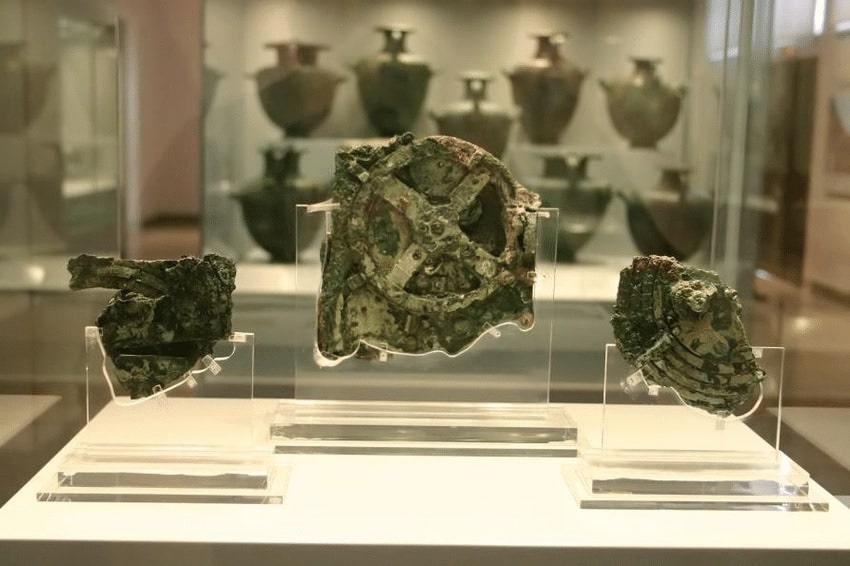
As we continue to explore the cosmos and push the boundaries of technology, the Antikythera mechanism serves as a reminder of our roots and the incredible achievements that can be accomplished through curiosity, innovation, and collaboration.
The Antikythera mechanism remains one of the most intriguing artifacts from the ancient world. Its complexity and sophistication continue to astonish researchers and challenge our assumptions about ancient technology. As we uncover more secrets of this remarkable device, we gain a deeper appreciation for the ingenuity and scientific knowledge of the ancient Greeks.
Use of Our Content
⚠️ Content on “Mystery Uncover” is protected under US and International Copyright Laws.
You are free to reuse, republish, and share our content by giving credit to the source as Mystery Uncover with a link to the original material on mysteryuncover.com.


